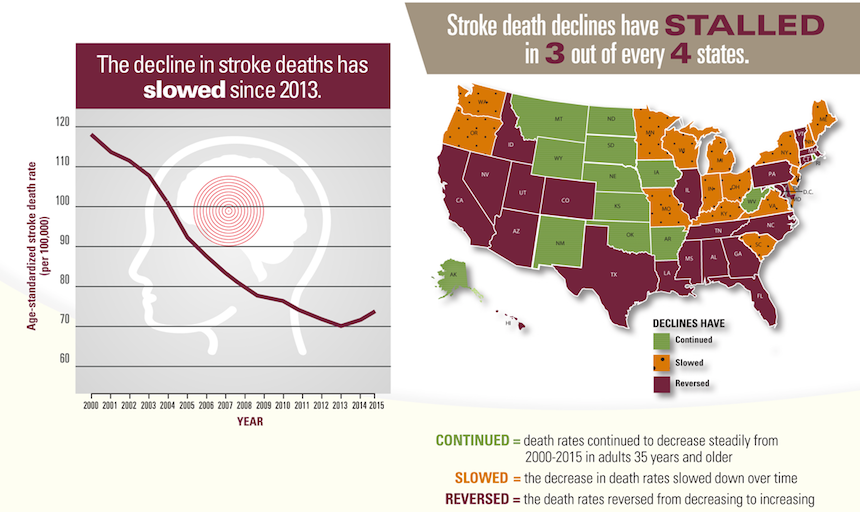

After more than four decades of decline, progress has slowed in preventing stroke deaths, according to the latest Vital Signs report by the Centers for Disease Control and Prevention (CDC). Not only has progress slowed among most demographic groups and states, stroke death rates have increased among Hispanics and people living in the South.
This new report found that the stall in progress is true for 3 out of 4 states across the U.S., not just in the “stroke belt.” While the report does not specifically address the reasons behind the slowdown, other studies point to increased numbers of Americans with risk factors such as high blood pressure, obesity, and diabetes. Stroke is one of the leading causes of death and disability, but it doesn’t have to be. Almost 800,000 people have a stroke each year and more than 140,000 die, even though about 80 percent of strokes are preventable.
“These findings are a wakeup call. We’ve made enormous progress in reducing stroke deaths, but that progress has stalled,” said CDC Director Brenda Fitzgerald, M.D. “We know the majority of strokes are preventable, and we must improve our efforts to reduce America’s stroke burden.”
Key findings from the report:
- After decades of decline, the progress in preventing stroke deaths has slowed.
- Blacks continue to have the highest stroke death rates among all races/ethnicities.
- Stroke death rates increased among Hispanics by 6 percent each year from 2013-2015.
- The decline in stroke death rates slowed in 38 states (about three out of four states and the District of Columbia) from 2000 through 2015.
- The findings emphasize the importance of increasing efforts to reduce stroke deaths by identifying risk factors, geographic trends, and other factors that may be driving the stall.


